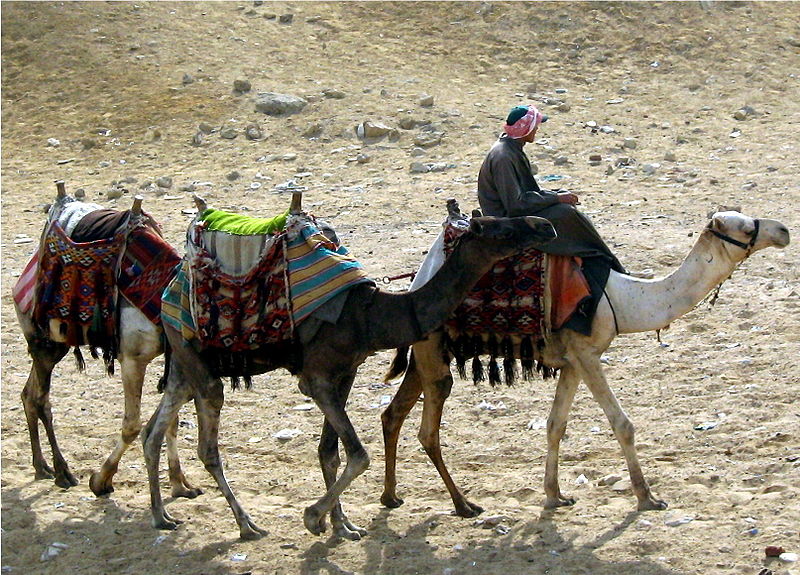Camels have no place in the Middle East of biblical times. Forensic scientists, biologists, archeologists, geneticists and paleontologists all seem to agree that camels could not have been present in the early Jewish stories of the Genesis and the Old Testament — camels trotted in to the land many hundreds of years later.
From the NYT:
There are too many camels in the Bible, out of time and out of place.
Camels probably had little or no role in the lives of such early Jewish patriarchs as Abraham, Jacob and Joseph, who lived in the first half of the second millennium B.C., and yet stories about them mention these domesticated pack animals more than 20 times. Genesis 24, for example, tells of Abraham’s servant going by camel on a mission to find a wife for Isaac.
These anachronisms are telling evidence that the Bible was written or edited long after the events it narrates and is not always reliable as verifiable history. These camel stories “do not encapsulate memories from the second millennium,” said Noam Mizrahi, an Israeli biblical scholar, “but should be viewed as back-projections from a much later period.”
Dr. Mizrahi likened the practice to a historical account of medieval events that veers off to a description of “how people in the Middle Ages used semitrailers in order to transport goods from one European kingdom to another.”
For two archaeologists at Tel Aviv University, the anachronisms were motivation to dig for camel bones at an ancient copper smelting camp in the Aravah Valley in Israel and in Wadi Finan in Jordan. They sought evidence of when domesticated camels were first introduced into the land of Israel and the surrounding region.
The archaeologists, Erez Ben-Yosef and Lidar Sapir-Hen, used radiocarbon dating to pinpoint the earliest known domesticated camels in Israel to the last third of the 10th century B.C. — centuries after the patriarchs lived and decades after the kingdom of David, according to the Bible. Some bones in deeper sediments, they said, probably belonged to wild camels that people hunted for their meat. Dr. Sapir-Hen could identify a domesticated animal by signs in leg bones that it had carried heavy loads.
The findings were published recently in the journal Tel Aviv and in a news release from Tel Aviv University. The archaeologists said that the origin of the domesticated camel was probably in the Arabian Peninsula, which borders the Aravah Valley. Egyptians exploited the copper resources there and probably had a hand in introducing the camels. Earlier, people in the region relied on mules and donkeys as their beasts of burden.
“The introduction of the camel to our region was a very important economic and social development,” Dr. Ben-Yosef said in a telephone interview. “The camel enabled long-distance trade for the first time, all the way to India, and perfume trade with Arabia. It’s unlikely that mules and donkeys could have traversed the distance from one desert oasis to the next.”
Dr. Mizrahi, a professor of Hebrew culture studies at Tel Aviv University who was not directly involved in the research, said that by the seventh century B.C. camels had become widely employed in trade and travel in Israel and through the Middle East, from Africa as far as India. The camel’s influence on biblical research was profound, if confusing, for that happened to be the time that the patriarchal stories were committed to writing and eventually canonized as part of the Hebrew Bible.
“One should be careful not to rush to the conclusion that the new archaeological findings automatically deny any historical value from the biblical stories,” Dr. Mizrahi said in an email. “Rather, they established that these traditions were indeed reformulated in relatively late periods after camels had been integrated into the Near Eastern economic system. But this does not mean that these very traditions cannot capture other details that have an older historical background.”
Read the entire article here.
Image: Camels at the Great Pyramid of Giza, Egypt. Courtesy of Wikipedia.

